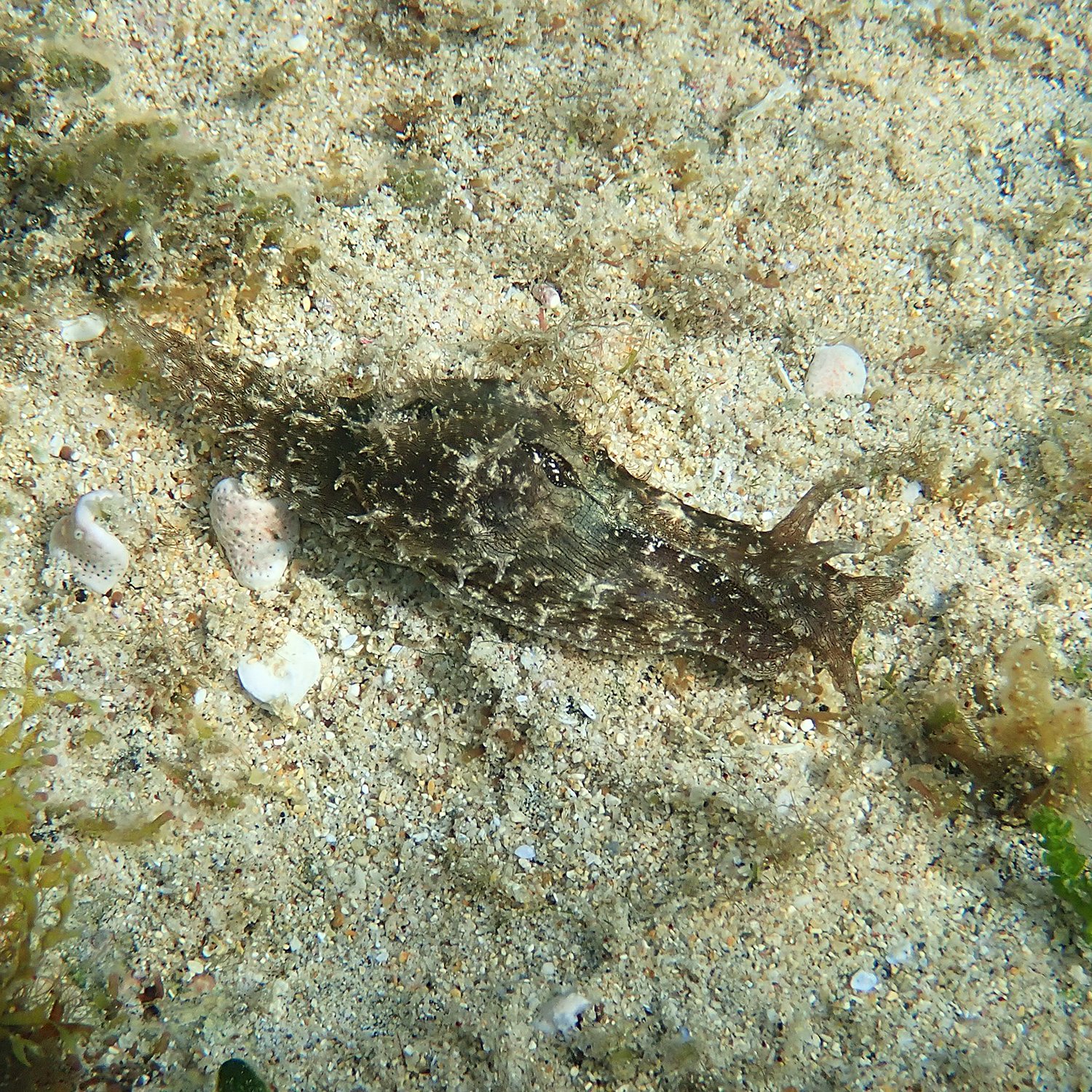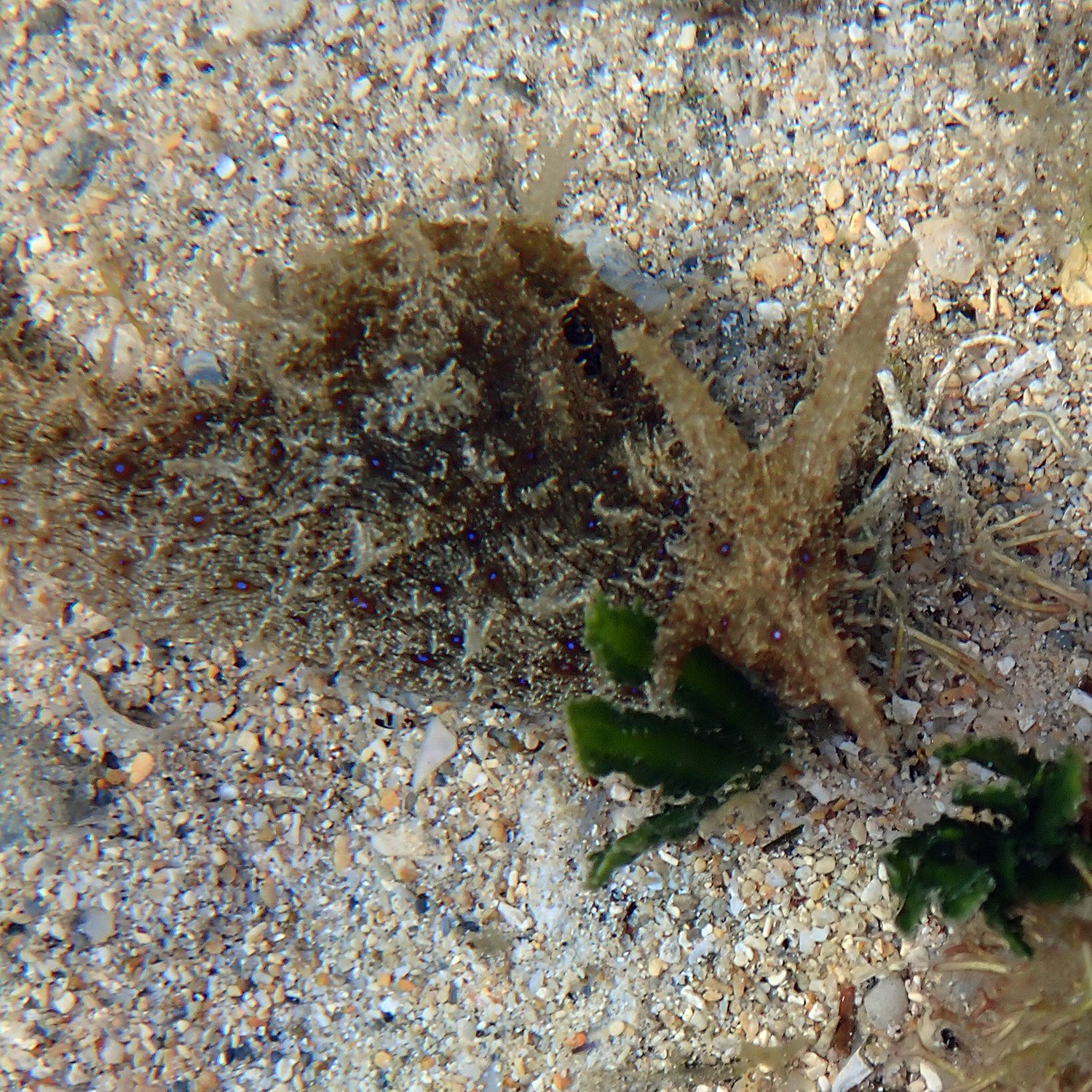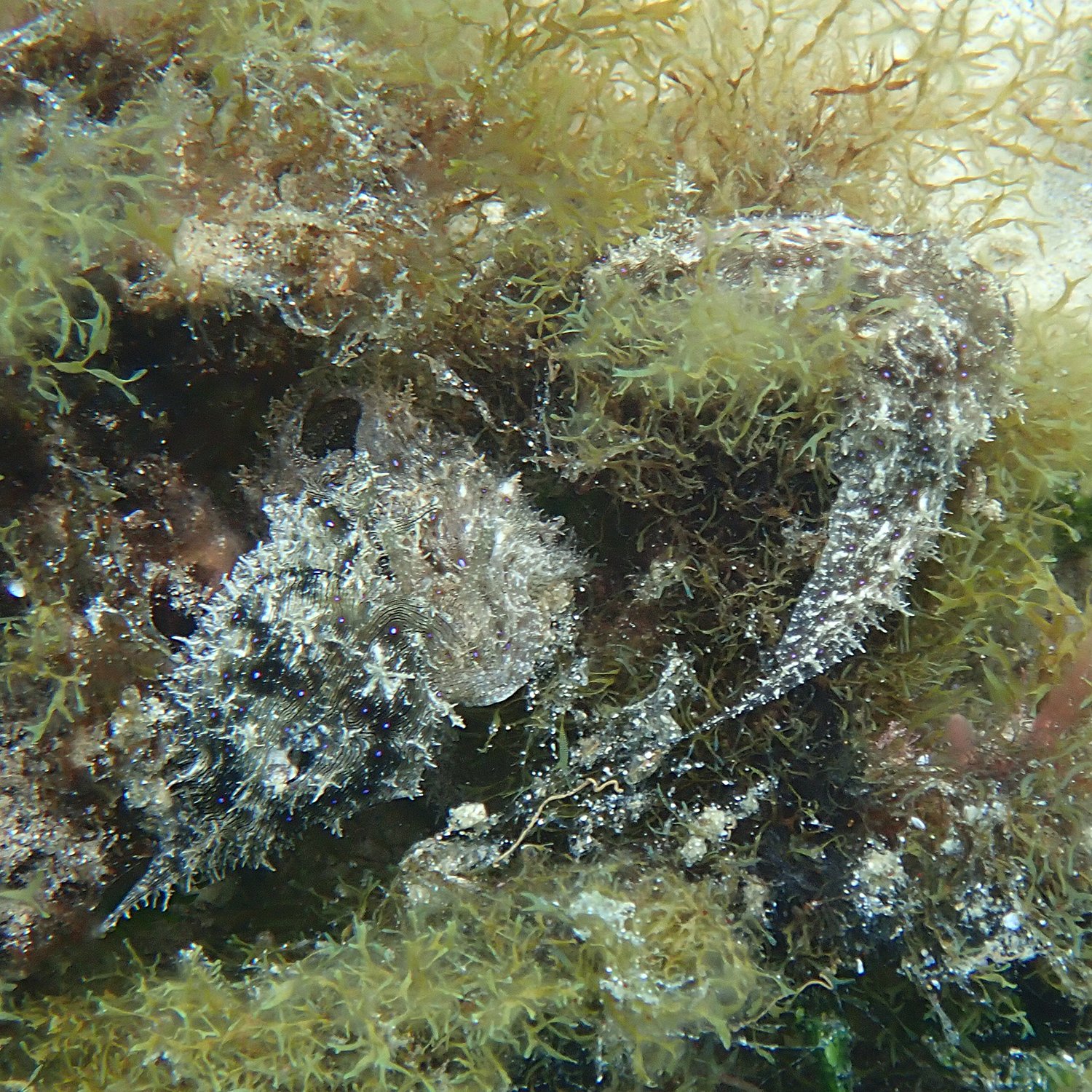Last week I noticed lots of sea hares, Stylocheilus striatus – commonly called the lined sea hare, blue ring sea hare or furry sea hare – in the shallows of Emily Bay. I’ve only seen this species twice before in the lagoons here: once on 4 January 2021, and once on 6 November 2021 – both times I observed lone individuals. That doesn’t mean they haven’t been there before, but I certainly haven’t noticed them, so I was astonished by the numbers that seemingly appeared almost overnight.
These little sea hares are incredibly well disguised in their algal habitat, but in the last few days, I can say, once you’ve seen one, you will suddenly see lots. And lots!
This week, I’ve come home from my swims armed with a bunch of photos and lots of questions. So I decided to do some research on these critters.
The facts
Sea hares are herbivores that feed on alga, with most species (as adults) not being too fussy about which species of alga they consume. However, Stylocheilus striatus are a particularly specialised type of feeder, consuming the cyanobacteria (blue-green) species of alga, especially one that is commonly known as mermaid’s hair, stinging limu or fireweed, Lyngbya majuscula[i]. This is a toxic filamentous blue-green alga that grows on sand or rocks.
Lyngbya majuscula grows in a nutrient rich environment. It can cause a range of medical conditions in humans, especially skin and eye irritations (swimmers itch), but also irritations to the gastrointestinal and respiratory systems.[ii]
Lyngbya majuscula contains chemicals that have been shown to be a deterrent to reef fish being able to feed; however, research suggests Stylocheilus striatus may cleverly sequester these toxic chemicals to use as a defensive mechanism.[iii]
Lyngbya majuscule can prevent the settlement of coral larvae, precipitating a phase shift in a lagoon habitat from a coral- to an algal-dominated reef.[iv]
Lyngbya majuscula, the blue-green alga, occurs naturally, but is not something we really want a great deal of in our reef environment.
Stylocheilus striatus have been reported to be found in dense feeding aggregations in association with blooms in cyanobacteria, or blue-green alga (Lyngbya majuscula).[v]
By eating the toxic blue-green alga, Lyngbya majuscula, Stylocheilus striatus play an important ecological role in controlling this algal growth.[vi]
Conclusion
These little sea hares are great to have around as they consume the toxic blue-green alga that fish and other herbivores don’t or can’t eat or tolerate.
The fact we have quite a few in Emily Bay begs the question as to why. Presumably, it means the conditions are right, asin there is plenty of food for them to eat, i.e. toxic blue-green alga.
I’m not a scientist, nor a researcher, so I am not qualified to draw any conclusions, but I did find it fascinating to learn how our eco-systems are balanced.
Fun facts
Interestingly, studies have shown that fewer Stylocheilus striatus eggs develop when they are subject to noise pollution from, for example, traffic noise from motorboats![vii]
Stylocheilus striatus develops blue dots, or ocelli, which become more prominent and numerous as it ages.[viii] You can see some of these if you click on the photos, above.
[i] The Feeding Ecology of Tropical Intertidal Herbivores, Thesis by Cathryn L. Clarke, James Cook University, March 2004, https://researchonline.jcu.edu.au/1083/2/02whole.pdf
[ii] Lyngbya (blue-green algae), WorkSafe Queensland, https://www.worksafe.qld.gov.au/safety-and-prevention/hazards/hazardous-exposures/biological-hazards/lyngbya
[iii] Ibid, p. 21
[iv] Horwitz R, Jackson MD, Mills SC. 2017. The embryonic life history of the tropical sea hare Stylocheilus striatus (Gastropoda: Opisthobranchia) under ambient and elevated ocean temperatures. PeerJ 5:e2956 https://doi.org/10.7717/peerj.2956
[v]The Feeding Ecology of Tropical Intertidal Herbivores, Thesis by Cathryn L. Clarke, James Cook University, March 2004, https://researchonline.jcu.edu.au/1083/2/02whole.pdf
[vi] https://en.wikipedia.org/wiki/Stylocheilus_striatus
[vii] Boat noise impacts development, survival of sea hares, Science Daily, 31 July 2014, https://www.sciencedaily.com/releases/2014/07/140731095013.htm
[viii] Sea Slugs of Hawai’i, by Cory Pittman and Pauline Fiene, http://seaslugsofhawaii.com/species/Stylocheilus-striatus-a.html






